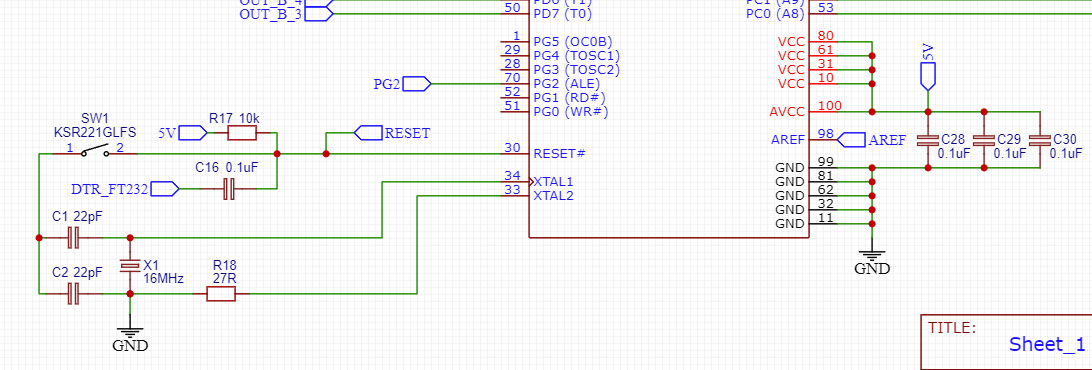I'm barely getting started with PCB designing. I'm working on my dissertation project and I want to develop a PCB board with an integrated microcontroller (ATmega2560-16AU) and some motor drivers as well. I'm close to finishing the board, but I have some concerns regarding the 16 MHz crystal oscillator that I've added for the microprocessor. Is the layout acceptable?
I've read that the oscillator should be placed as close to the MCU as possible, and I've situated mine at approximately 22-24 mm away. Besides this, I've had to route the traces using several vias (4 at most). Will my MCU's performance be impacted by this design?




